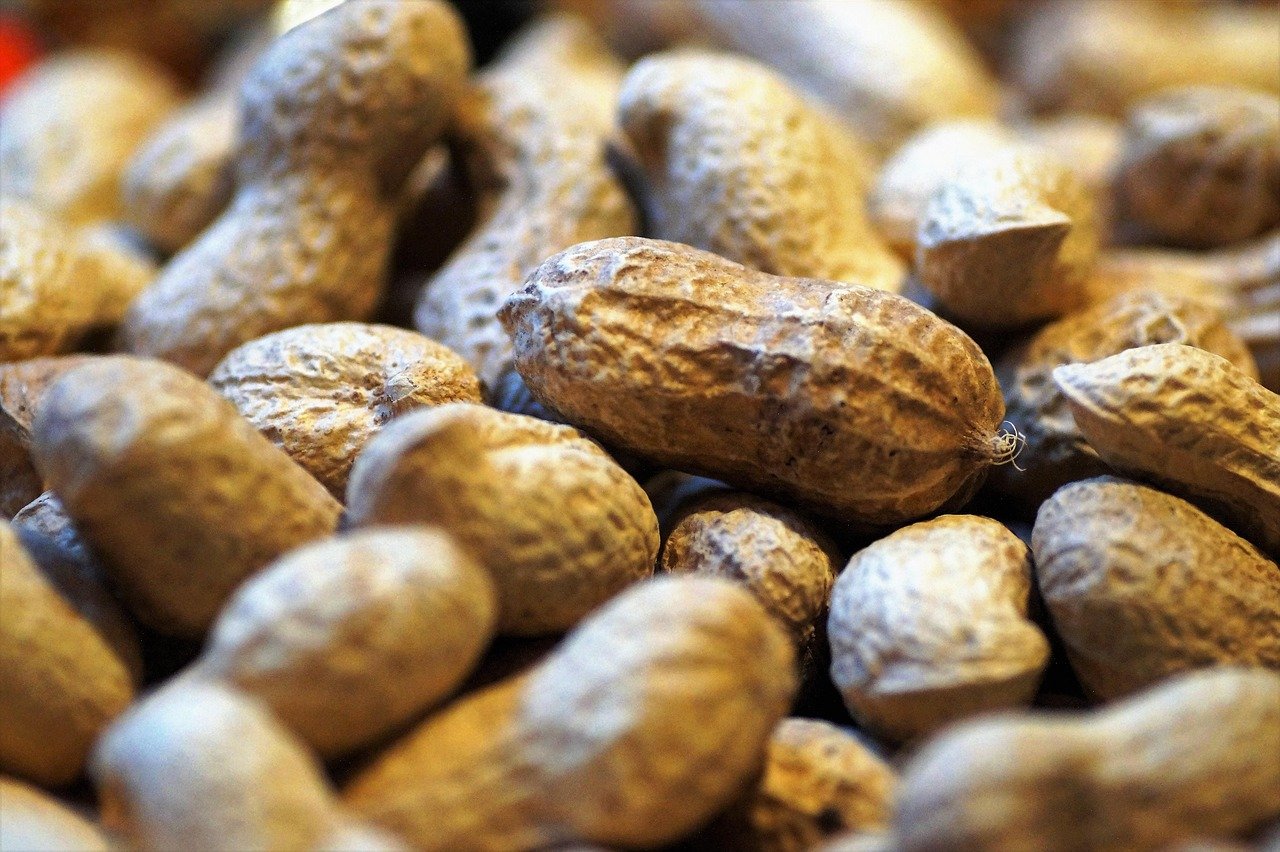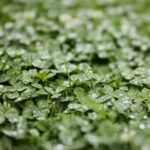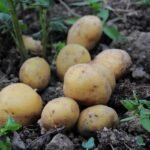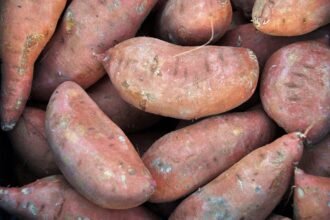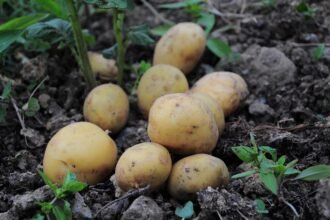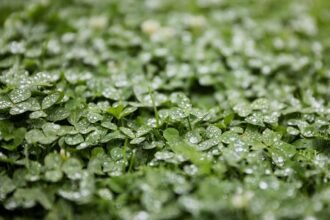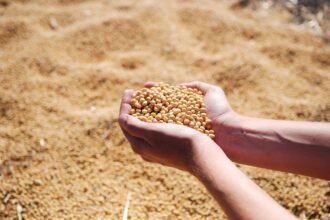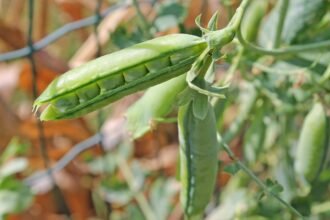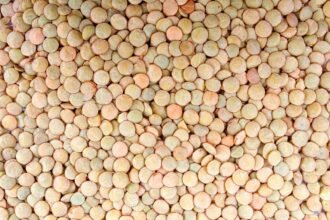Groundnuts (Arachis hypogaea), also known as peanuts, are a leguminous crop widely grown for their edible seeds and oil content. Groundnuts are rich in proteins, fats, and essential vitamins, making them an important crop for human consumption and animal feed. Groundnuts also play a significant role in improving soil fertility due to their nitrogen-fixing ability. Successful groundnut farming requires careful management of soil, water, pests, and diseases to ensure high-quality and high-yield production. This guide provides a comprehensive overview of the key technical aspects of groundnut cultivation.
1. Soil Preparation and Fertility Management
Groundnuts thrive in well-drained, sandy loam soils with good structure and sufficient organic matter. Proper soil preparation is critical for achieving optimal yields.
Key Steps:
- Soil Testing: Conduct a soil test to evaluate the pH, nutrient levels, and soil structure. Groundnuts prefer slightly acidic soils with a pH between 5.5 and 7.0. If necessary, apply lime to raise soil pH.
- Tillage: Groundnuts require loose, well-aerated soil for good root development. Prepare the soil by plowing and harrowing to a depth of 15–20 cm (6–8 inches). This helps ensure good seed-to-soil contact and reduces soil compaction.
- Fertilization: Groundnuts are nitrogen-fixing plants and can obtain nitrogen from the atmosphere through a symbiotic relationship with rhizobial bacteria. However, they still require phosphorus (P) for root development and potassium (K) for overall plant health. Apply phosphorus at planting and potassium during flowering and pod formation.
- Organic Matter: Adding compost or manure improves soil structure, nutrient availability, and water retention, particularly in sandy or low-fertility soils.
2. Selecting the Right Groundnut Variety
Choosing the right groundnut variety is crucial to optimize yield, quality, and disease resistance. Several varieties of groundnuts are available, each suited to different climates, soil types, and growing conditions.
Groundnut Varieties:
- Runner Varieties: These varieties are mainly grown for peanut butter production and are high-yielding with larger seeds. They are well-suited for well-drained, fertile soils.
- Spanish Varieties: These have smaller seeds and are often grown for roasted peanuts or snack products. Spanish peanuts are more drought-tolerant than other types.
- Valencia Varieties: These peanuts are often used in snacks and have a higher oil content. They are suited for cooler climates.
- Virginia Varieties: Known for their larger size and higher oil content, Virginia peanuts are often grown for fresh consumption or roasted products.
- Disease-Resistant Varieties: Choose varieties resistant to common diseases like leaf spot, rust, and soil-borne fungal diseases to reduce losses.
Select varieties that are suited to your local climate, soil conditions, and market demand.
3. Planting and Sowing Techniques
Proper planting ensures good seedling establishment and optimal growth, leading to high yields and quality produce.
Key Steps:
- Planting Time: Plant groundnuts in the early spring or late summer when soil temperatures reach at least 20°C (68°F). Groundnuts require a long growing season, typically 120–160 days, depending on the variety and climate.
- Sowing Depth: Plant groundnut seeds 5–7 cm (2–3 inches) deep. Shallow planting may expose seeds to drying, while deeper planting may delay germination.
- Row Spacing: The recommended row spacing for groundnuts is 45–75 cm (18–30 inches). Narrower rows may lead to overcrowding, while wider rows improve air circulation and reduce disease risk.
- Seed Rate: Use 80–120 kg of seed per hectare, depending on the variety and row spacing. A lower seed rate allows for better plant development and air circulation.
4. Water Management
Groundnuts require adequate moisture, particularly during the germination and pod-filling stages, but are relatively drought-tolerant once established.
Key Steps:
- Water Requirements: Groundnuts require approximately 500–700 mm (20–28 inches) of water per growing season, with the most critical periods being during flowering and pod development.
- Rain-fed vs. Irrigated Systems: Groundnuts can be grown under rain-fed conditions, but supplementary irrigation may be required in areas with irregular rainfall or during dry periods.
- Irrigation Techniques: Drip irrigation or sprinkler systems are ideal for providing consistent moisture while reducing water wastage. Avoid over-watering, as excessive water can lead to root rot.
5. Nutrient Management
Groundnuts require a balanced supply of nutrients for optimal growth and high-quality seed production.
Key Steps:
- Nitrogen Fixation: Groundnuts are capable of fixing nitrogen through a symbiotic relationship with rhizobial bacteria in the soil. However, they require phosphorus and potassium for root and pod development.
- Phosphorus and Potassium: Apply phosphorus at planting to support root development and potassium during flowering and pod formation to increase yield and quality.
- Micronutrients: Ensure that the soil contains sufficient levels of micronutrients like zinc, magnesium, and sulfur, which are critical for optimal growth and pod filling.
6. Weed Control
Weeds compete with groundnuts for light, nutrients, and water. Effective weed management ensures better growth and higher yields.
Key Steps:
- Pre-emergence Herbicides: Apply pre-emergence herbicides to control weed growth before groundnut plants emerge from the soil. This helps reduce early competition from weeds.
- Post-emergence Herbicides: After groundnuts have emerged, use selective herbicides to manage broadleaf and grass weeds. Always follow recommended application rates and timings to avoid damage to the crop.
- Manual Weeding: For small-scale operations, manual weeding may be necessary, particularly in the early stages of growth.
- Mulching: Apply organic mulch around groundnut plants to suppress weed growth, retain moisture, and improve soil health.
7. Pest and Disease Management
Groundnuts are susceptible to several pests and diseases that can reduce yield and quality. Early identification and control are key to preventing significant damage.
Common Pests:
- Aphids: Aphids feed on the sap of groundnut plants and can transmit diseases like Groundnut Rosette Virus (GRV). Use insecticides or natural predators like ladybugs to control aphid populations.
- Tobacco Budworm: This pest feeds on flowers and young pods. Use insecticides or natural predators to control its population.
- Root-Knot Nematodes: These pests damage roots and reduce nutrient uptake. Use nematode-resistant varieties and practice crop rotation to manage nematode populations.
Common Diseases:
- Leaf Spot: A fungal disease that causes spots on leaves and can reduce photosynthesis. Use fungicides and resistant varieties to control leaf spot.
- Rust: This disease causes lesions on leaves and stems, weakening the plant. Use resistant varieties and fungicides to manage rust.
- Fusarium Wilt: A soil-borne disease that affects the roots and causes wilting. Crop rotation and soil fumigation can help control Fusarium wilt.
- Integrated Pest Management (IPM): Combine biological control, crop rotation, and minimal pesticide use to effectively manage pests and diseases while minimizing environmental impact.
8. Harvesting and Post-Harvest Handling
Harvesting groundnuts at the right time is crucial to maintaining seed quality and minimizing losses.
Key Steps:
- Harvest Timing: Groundnuts should be harvested when the plants begin to mature and the leaves start to yellow. This typically occurs 120–160 days after planting, depending on the variety and growing conditions. The pods should rattle when shaken, indicating that the seeds are mature.
- Mechanical Harvesting: Use mechanical diggers to loosen the plants from the soil. After harvesting, the plants should be dried for 2–3 days in the field to reduce moisture content.
- Manual Harvesting: In smaller operations, manually pull the plants and allow them to dry in the field before threshing.
- Drying: After harvesting, ensure the groundnuts are properly dried to reduce moisture content to around 8–10% for safe storage.
- Storage: Store groundnuts in a cool, dry, and well-ventilated area. Use airtight containers or sacks to protect them from pests and moisture. Proper storage helps maintain quality and prevents spoilage.
9. Sustainable Groundnut Farming Practices
Groundnuts are an environmentally friendly crop due to their nitrogen-fixing ability, which reduces the need for synthetic fertilizers. Adopting sustainable farming practices ensures long-term productivity and environmental health.
Sustainable Practices:
- Crop Rotation: Rotate groundnuts with other crops such as cereals or legumes to improve soil health, reduce pest pressure, and break disease cycles.
- Conservation Tillage: Minimize tillage to conserve soil moisture, reduce erosion, and improve soil structure.
- Water Management: Use efficient irrigation systems and rainwater harvesting to minimize water usage and improve sustainability.
- Organic Farming: Consider growing groundnuts organically to reduce reliance on synthetic fertilizers and pesticides, benefiting both the environment and farm profitability.
Conclusion
Groundnut cultivation requires careful attention to soil health, irrigation, pest control, and harvesting to achieve high yields and quality seeds. By following best practices for planting, pest management, and sustainable farming, you can ensure a productive groundnut crop. Whether you are growing groundnuts for food, oil extraction, or animal feed, understanding the technical aspects of cultivation is key to success.

